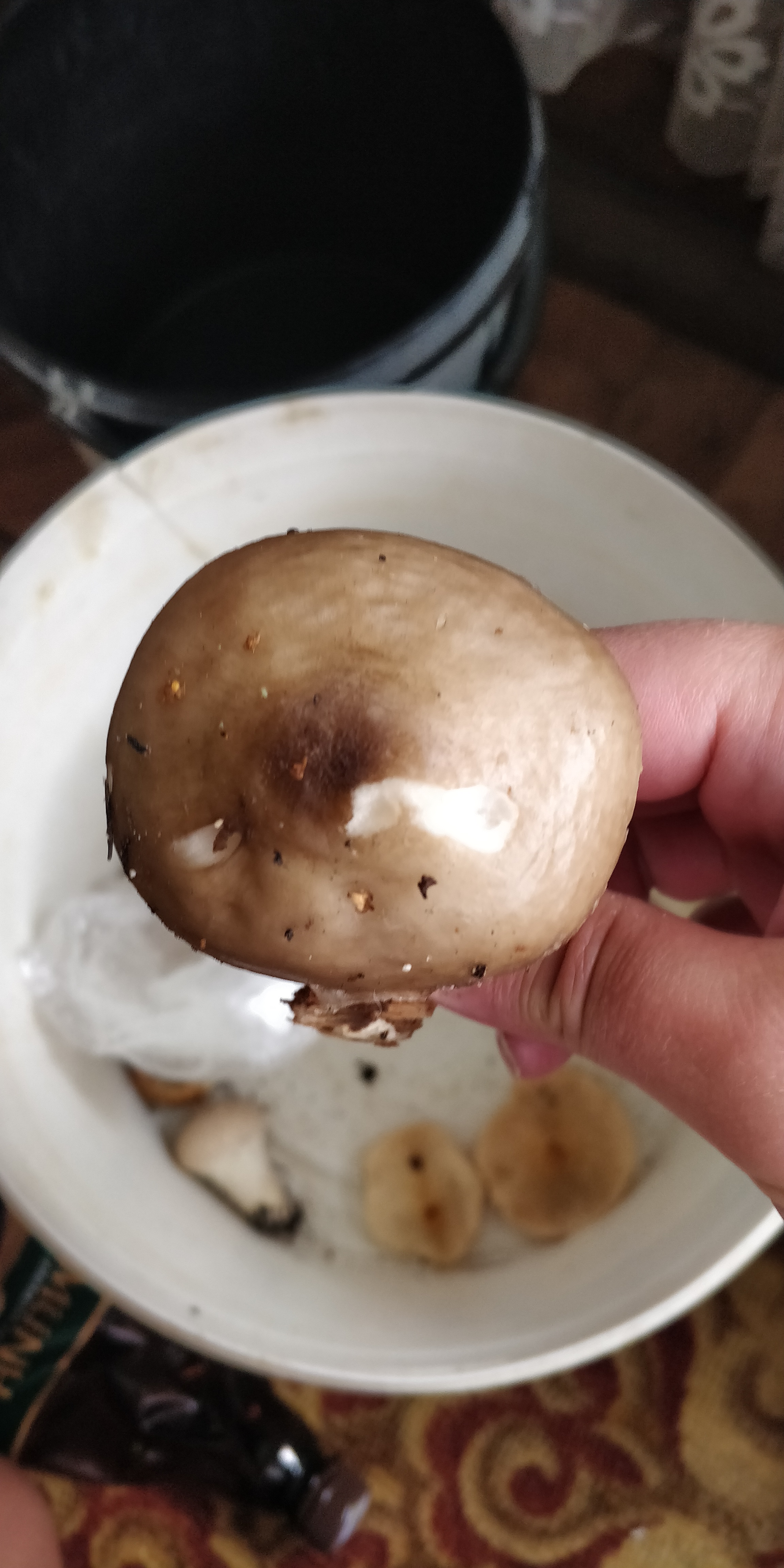Suspected Death Cap Complex
Amanita phalloides
High Risk: Potential Deadly Amanita Lookalike

1 / 4
Tutte le immagini (4)
Caratteristiche Chiave
- Cap brown to olive-brown
- smooth
- convex to broadly convex
- Gills white
- crowded
- appearing free or narrowly attached
- Stem white
- solid
- potentially lacking a visible ring (annulus)
- Base structure (volva) is obscured or missing in the image
- Gills remain white (suggests white spore print)
- Overall robust
- fleshy stature
Colore:
Brown cap, white gills and stem
Odore:
Unknown
Schema di Crescita:
Cannot assess
Ambiente:
Unknown
Habitat e Distribuzione
Habitat:
Unknown (Amanita species are typically mycorrhizal with trees)
Distribuzione:
Widespread globally, depending on specific species
Stagionalità:
Unknown
Caratteristiche determinanti per la conferma
- Critical identifying features (volva, ring) are obscured or missing
- Spore print color is unknown, preventing confirmation of genus (Amanita vs. Pluteus)
- Habitat and geographical data are missing
Valore Economico
Domanda di Mercato:
None - toxic
Fascia di Prezzo:
N/A
Uso Commerciale:
None
Specie Simili
Deer Mushroom
Pluteus cervinus
Differenze Chiave:
- Gills turn pink rapidly due to pink spore print
- Gills are truly free from the stem
- Lacks a volva or ring
Volvopluteus
Volvopluteus gloiocephalus
Differenze Chiave:
- Gills turn pink due to pink spore print
- Always possesses a large, sack-like volva at the base
Destroying Angel
Amanita virosa
Differenze Chiave:
- Typically pure white cap and stem
- Usually possesses a distinct ring and volva
Azione Consigliata
Do not consume. Immediate disposal of all collected specimens is mandatory. Wash hands thoroughly.